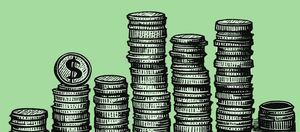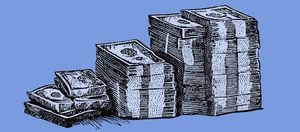Matthew Luhn is a writer, story-branding consultant, and keynote speaker. With over 25 years of experience at Pixar Animation Studios, his story credits include Toy Story, Monsters, Inc., Finding Nemo, and Up. Alongside his work in Hollywood, Luhn teaches CEOs, marketers, and other business and industry pros how to craft stories for corporate brands worldwide. His new book is The Best Story Wins: How to Leverage Hollywood Storytelling in Business and Beyond. Learn more at matthewluhnstory.com.
Harness the Power of Pixar Storytelling to Perfect Your Pitch
4 min. read
Updated October 27, 2023
For 25 years, it’s been my job to craft heartwarming and sometimes heart-wrenching stories about rats that want to cook, fish that become better parents, and toys that learn to get along. Stories can transport us to unique (and imaginary) worlds, transforming the way we think and feel by placing us in the paws, fins, or cowboy boots of the heroes going through life-changing events.
The principles of great storytelling, which I used at Pixar, can also be leveraged by entrepreneurs wanting to seal the deal at their next pitch or presentation.
Great stories help us feel more connected with information. This is why Pixar films resonate so deeply with us and we remember the characters and moments so vividly. When you transform data and statistics into a story, memory increases dramatically. The late cognitive psychologist Jerome Bruner found that facts are 22 times more likely to be remembered if they are part of a story.
The 8-second countdown
One key fact: You have eight seconds to convince investors or customers that you’ve got something worth hearing about before they zone out, tune out, or check out.
So how do you create a great hook that holds someone’s attention? Start with something unusual, unexpected, action-driven, or in conflict.
Start with a “what if?” scenario.
“What if superheroes were banned from saving people?” That was the hook for “The Incredibles,” which took the day-to-day world of superheroes saving people and turned it into an unusual situation. Your audience is now hooked and asking, “Why and how did they get banned?”
When Steve Jobs introduced the iPod in 2001, his hook was: “What if you could put a thousand songs in your pocket?” This was unheard of. At the time, the only way you could listen to music on the go was with a cassette tape stuffed in a Walkman. Steve shared something unusual and unexpected in eight seconds that grabbed his audience’s attention.
Entrepreneurs, take notice. Look at your product or service as if it were a movie. Develop that eight-second “elevator pitch” that grabs clients by the lapels. Tell a compelling story that shows how their lives will be changed.
Inside the brain: Why storytelling works
Storytelling is the most effective way to change minds, behaviors, and philosophies. When characters go through a believable transformation, the audience is changed as well. This “neural coupling” occurs when the brain activity of the storyteller and the person listening mirror each other.
Neural coupling actually affects our bodies on a chemical level. When people—or even animated toys, robots, or rats—are laughing, smiling, or sharing stories of suspense, dopamine and endorphins are released in our bodies. When the story is sad or somber, oxytocin is released. When we place these sad and happy moments next to each other in a story, we build an amusement park ride for people’s hearts and minds.
Wouldn’t you love to deliver a sales pitch to an investor or customer and have that same can’t-leave-your-seat effect on your audience?
Build a stronger relationship with your audience by inviting them to an experience, not a mission statement. Share authentic stories that are personal, vulnerable, and honest.
Stories deliver smart lessons
After “Toy Story” came out in 1995 and was declared a huge success, employees wondered if Pixar would try its hand at making live-action movies as well. What about TV shows? Video games? Pixar employees were prepared to make the leap from startup to a worldwide media company, like Disney.
To keep us grounded, Steve Jobs shared a cautionary tale that kept us focused as a company and safe from going bankrupt. It went like this: “When Apple was just getting started, the team and I loved to go eat at one particular sandwich shop in Silicon Valley. Although it was a small shop, owned and operated by a family, it served the very best sandwiches in town.
“The sandwiches were so delicious; we would even wait 45 minutes in line just to get one. But as the sandwich shop grew in popularity, the owners began to serve coffee and pastries to compete with Starbucks and Krispy Kreme. Unfortunately, their coffee and pastries were mediocre, and the attention to detail on their trademark sandwiches lapsed. So we stopped eating there. Months later, I discovered the sandwich shop was gone. They had spread themselves too thin, and they went out of business.”
Steve’s story drove home the point loud and clear: Don’t over leverage yourself.
Even though “Toy Story” was a wild success, if we spread ourselves too thin, too fast, we would risk losing it all. We needed to focus on making really good animated family films. Steve knew the best way to communicate this message to us was by sharing a story about characters facing change and learning.
Include a beginning, middle, and end
One last tip: Make sure you include a beginning, middle, and end in your stories. Did you see how Steve included a setup, build, and payoff in his sandwich story?
Setup: Successful business.
Build: Business grows too quickly.
Payoff: Business goes bankrupt.
This structure keeps an audience from getting bored, confused, or distracted.
For thousands of years, the best writers (and savvy business leaders) have used these storytelling techniques to inspire their listeners to try something new. Now it’s your turn. How can you, the entrepreneur, use storytelling to create stronger authentic connections with your investors and customers?










